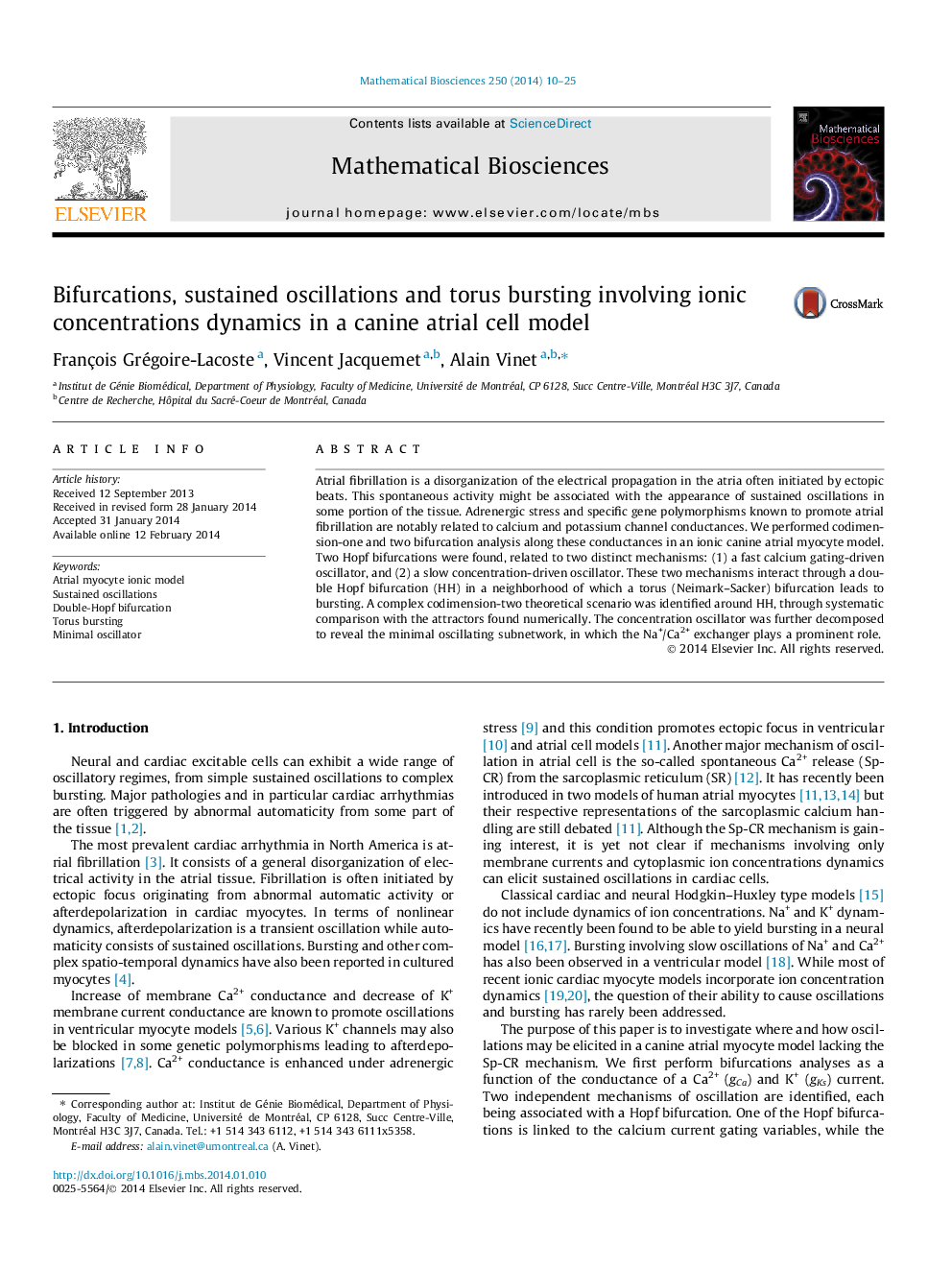| Article ID | Journal | Published Year | Pages | File Type |
|---|---|---|---|---|
| 4500047 | Mathematical Biosciences | 2014 | 16 Pages |
•Bifurcations of an ionic atrial cell model are analyzed with regard to two parameters known to promote automaticity.•Two Hopf bifurcations are found, each being related to a distinct subsystem.•One subsystem involves ionic channels. It generates the fast oscillation and is the main mechanism for automaticity.•The second subsystem is linked to the concentrations and drives a slow oscillatory behavior.•Their interaction, through a double Hopf bifurcation, yields torus bursting.
Atrial fibrillation is a disorganization of the electrical propagation in the atria often initiated by ectopic beats. This spontaneous activity might be associated with the appearance of sustained oscillations in some portion of the tissue. Adrenergic stress and specific gene polymorphisms known to promote atrial fibrillation are notably related to calcium and potassium channel conductances. We performed codimension-one and two bifurcation analysis along these conductances in an ionic canine atrial myocyte model. Two Hopf bifurcations were found, related to two distinct mechanisms: (1) a fast calcium gating-driven oscillator, and (2) a slow concentration-driven oscillator. These two mechanisms interact through a double Hopf bifurcation (HH) in a neighborhood of which a torus (Neimark–Sacker) bifurcation leads to bursting. A complex codimension-two theoretical scenario was identified around HH, through systematic comparison with the attractors found numerically. The concentration oscillator was further decomposed to reveal the minimal oscillating subnetwork, in which the Na+/Ca2+ exchanger plays a prominent role.
